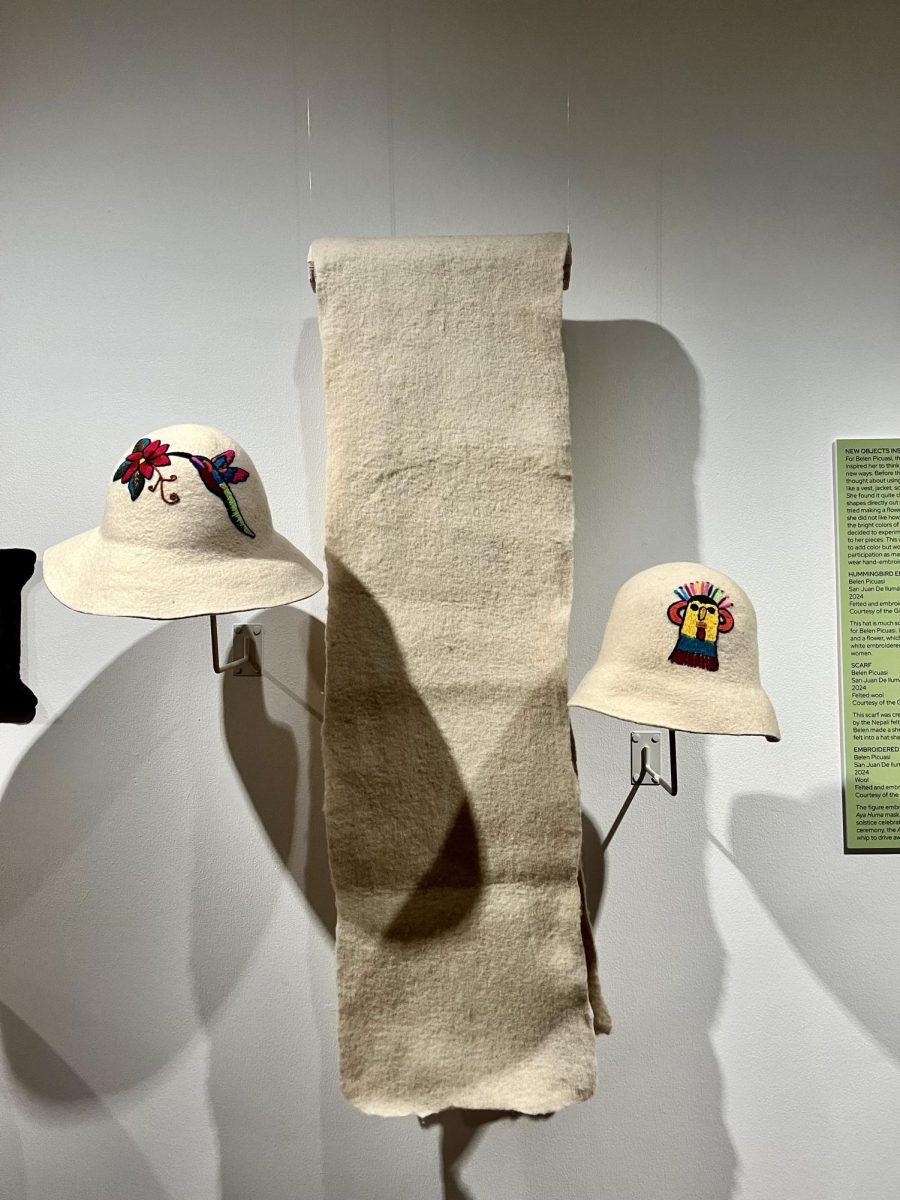I invite you to step into Nancy Nicholas Hall, turn to the left, enter the Lynn Mecklenburg Textile Gallery and “Feel the Beat.”
“Feel the Beat: Felted Textiles” is a felted textile exhibition available until Dec. 1. It was curated by professor Jennifer Angus and her students in her Global Artisans class. Angus said she was inspired to curate a felt exhibition for several reasons, with a key motivation being the contrast she observed between two felt-making groups from different countries.
While the Nepalese feltmakers tend to create products with a softer touch, the Ecuadorians take 30 days to create their hats, leaving them with an end product so hard it feels as thick as a wooden table, Angus said.
Upon walking into the exhibition, you are greeted with a bold text as an introduction to the exhibition.
“Thump, thump, thump,” it reads, “This is the primeval sound of life, a beating heart. It’s also the percussive beat heard when the world’s oldest textile [felt] is made by hand.”
I know you can picture it in your mind, the pounding of swollen hands into fiber, strong and determined. But you would be awed at the beauty and precision in these felt pieces — feminine and fabulous.
On the other side are hats made by Belen Picuasi, an Ecuadorian feltmaker. But these feel different. They’re constructed of felted wool, soft to the touch. My favorite is a hat with an “Aya Huma” mask embroidered on it. The figure is meant to be worn during the winter solstice celebration called “Inti Raymi,” where the mask figure dances with a whip to ward off evil spirits, according to supporting text at the exhibition.
Turn around the next corner, and you will find rectangular, felted Nepali products hanging on the wall. I traced my fingers down the spine of the “Tree Felt Square” — the design of greens, oranges and browns and the circular edges of the objects remind me of childlike happiness. These products are typically made for export or tourist markets, according to the exhibition.
Colorful balls of felted toys and ornaments juxtapose another piece in the exhibition, a dramatic coat worn by Magyar herdsmen in Hungary as far back as the middle ages. Its broad-shouldered silhouette with red and gold designs are very different from the playful Nepali animals, or even the notorious felted poodle skirts that were popular in Britain and the United States in the 1950s. Felt is everywhere, but why is it so essential to human life?
According to Angus, felt can be used for basic needs of warmth and pain relief.
“Felt is considered the oldest constructed textile in the world,” Angus said. “It’s presumed that it’s kind of by accident … people wore skins, and then they had sheep, and they took that wool to probably ease some pain … and put it between their feet and the leather sole. And just by walking, you create the conditions to make felt.”
Students should visit the “Feel the Beat” exhibition to engage interactively with the cultural stories of felt. From touching the different textures of felt and materials to examining the history of felt, there’s a lot to experience. For more information on the exhibition and related upcoming events, visit the Center for Design and Material Culture’s website.


